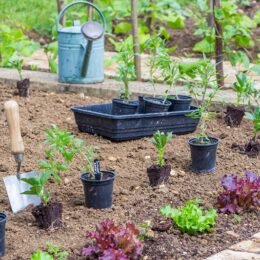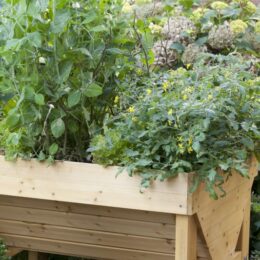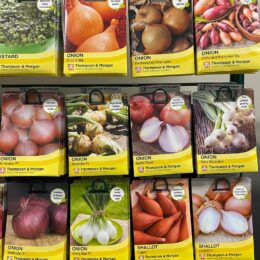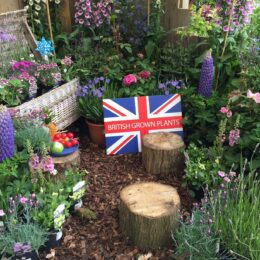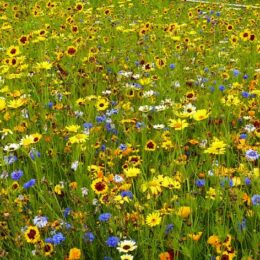To help beginners, we’d like to share some useful advice on growing vegetables to get you started and achieve the best results. Whether you have just a windowsill to spare or an entire empty vegetable patch, it makes no difference to the enjoyment you can have producing your own food.
You can get started with minimal resources; you don’t need to have a conventional vegetable plot or, indeed any outdoor space at all. Read our ‘How to’? Grow Tomatoes from Pips guide and see how simple it is to start a small project using pretty much any container to grow in, from a frozen sweetcorn bag to a baked bean tin!

Have you considered growing vegetables for the first time but don’t know where to start? Perhaps you’d like to, but you have a reason for not giving growing your own a try? There’s no need to be put off by a lack of time, space, or knowledge – read more here.
What Shall I Grow?
Planning what to grow can be a fun activity.
Easy – if you are a complete novice, start with something simple – strawberries, lettuce, spinach, radish, potatoes, peas and beetroot are all good for beginners.
Favourites – Start by thinking about what vegetables you and your family like to eat – do you eat lots of salad or perhaps root vegetables such as potatoes or carrots would be more useful in your family? Popular choices for children are strawberries and peas.
Space – Consider the space you have to grow them. If you don’t have an outdoor space, then herbs on a windowsill would be a good choice. Potatoes, strawberries and tomatoes can also be successful indoors if you have space in a bright spot. If you are growing in containers on a patio or balcony, try strawberries, tomatoes or peas. A deep container can hold potatoes, onions or carrots. A VegTrug is a good option to grow a variety of vegetables and is particularly beneficial for wheelchair users. If you have room in the garden to grow, then the choice is yours!
Unusual or expensive – maybe you’d like to grow your own unusual vegetables that are hard to get hold of in shops. Aubergines and asparagus are expensive to purchase in shops; growing your own can save money.
How do I get started?
Growing from Seed

GAP Photos Ltd
Seeds are the most economical way to grow your own. Plus, it’s extra rewarding to harvest your crop when you have nurtured it from scratch. March is generally the prime time for seed sowing, but actually, there is a vegetable to be sown all year round (except for December and January). Read the seed packet information to check when is best to sow and if it is suitable for your growing conditions. Refer to our Seed Growing Guide to help you decide.
Indoors or Outdoors?
Some seeds are best sown indoors to start them off, and others can go straight outside into the ground. Those vegetables that are recommended for indoor sowing need protection from frost and need to be kept sheltered until temperatures remain above 5 to 7 degrees centigrade at night, this is normally around mid-May. Cold hardy plants are those that can be sown straight outdoors; they are frost resistant and can actually taste better after being bitten on a cold and frosty morning!
Sow indoors: courgette, cucumbers, marrow, runner beans, squash, sweetcorn, tomatoes, peppers
Plants raised indoors or in a greenhouse need to be acclimatised to being in cooler temperatures and lower humidity before they are planted outdoors. This is known as hardening off. Two to three weeks before you plan to plant outdoors, leave the plants in a sheltered spot in the garden, bringing them in overnight, and slowly increase the time they are left out. Remember to protect from frost, likely to occur until May.

GAP Photos Ltd
Sow outdoors: lettuce, beetroot, brussels sprouts, cabbage, carrots, leeks, onions, garlic, parsnips, potatoes, radishes, shallots, spinach
For more details about growing specific vegetables, refer to our ‘How to’? Sow and Look After Your Vegetable Seeds guide
How far apart should plants be spaced?
Once seedlings have grown, the next step is to get them planted out into the vegetable patch or container. If sowing directly into the ground or container, the seedlings will need thinning out once they are a few cm tall. Spacing the plants correctly is essential to achieve the best crop. Make sure plants are not too close together; they will be stronger and healthier if spaced correctly. Vegetables each need spacing differently, read the information on the seed packet or research online. Here are a few popular vegetable minimum spacing recommendations :
Carrot 5cm apart, broccoli 50cm, lettuce 10cm, potatoes 30cm, peas 8cm, tomatoes 60cm.

GAP Photos Ltd
Tip – Don’t forget which is which!
If you are a novice and growing multiple vegetables, it can be straightforward to forget which is which as they grow into seedlings. Always make sure you have labeled the container or row in the vegetable patch. You can either make your own (lolly sticks and a marker pen work well), or you can use the seed packet or label that the young vegetable plant came with.

GAP Photos Ltd
Ready to grow plants
If you don’t have the time for seed growing, or you’ve left it too late in the season to start growing the vegetable you want, you can purchase a ready-grown plant from mid-May. These can be planted straight into the ground or container and need regular watering, weeding and feeding to ensure they produce the best crop.
If you are a novice, try growing tomato plants, read our ‘How to’? Grow your Own Tomatoes guide to help decide which variety to grow and find advice on caring for the plants to ensure you get a good healthy crop.

GAP Photos Ltd
What can be Grown in Containers?
If you don’t have the room in your garden for a vegetable patch, some can be grown in pots either outside (from mid-May) or indoors. We suggest the following fruit and vegetables for containers and recommend the pot to be around 30cm in diameter; it’s best to go bigger rather than smaller:
Aubergine, beetroot, cucumbers, herbs, lettuce (cut and come again), pea shoots, peppers, potatoes, strawberries, tomatoes.
Use good quality compost, a multi-purpose will be fine, but an even better option is one specifically for vegetables. It is essential to keep the container watered regularly to make sure it is kept evenly moist. Have you tried our compost drive-thru? It’s a quick and easy way to purchase compost without having to leave your car!

GAP Photos Ltd
Happy growing!



